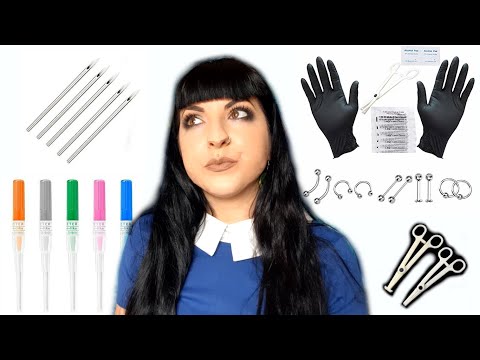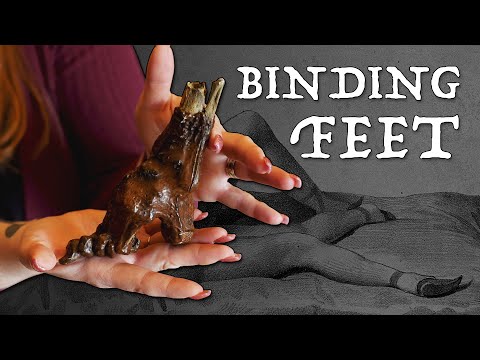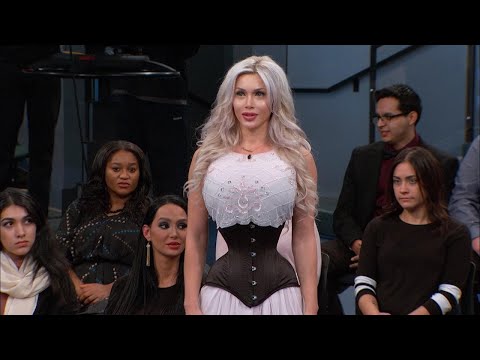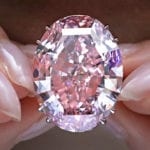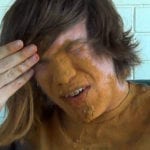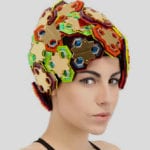From deadly chemicals to radiation to the breaking and removing of bones, women have had to endure some seriously unsafe practices to meet shifting social standards. Here are ten of the most dangerous fashion trends that women, somehow, participated in.
10 Lead, Arsenic, & Mercury—Oh My
Though we named three of the big ones, we could easily have included more, like turpentine, formaldehyde, phthalates, parabens, and more. Over the millennia, there has been no shortage of deadly chemicals used in beauty products. Women have literally been poisoning themselves for beauty for as long as there has been fashion. The examples are too numerous to list. Among them are:
Arsenic pads, which were used to pale the complexion (they worked by killing the red blood cells under the skin). Lead powder, which was used to create the signature Baroque white face. Scheele’s green, a vibrant green dye made from arsenic that caused cancer after repeated use. Mercury-treated hats which caused neurological disorders and are the reason we’ve all heard the phrase “mad as a hatter.”
9 Neck Rings
Neck rings have emerged independently in several civilizations, ranging across Africa and Asia. The process entails covering the neck of a growing girl with metal rings and adding more rings as she grows (or winding the single metal ring another turn). They add even more rings if any gap or looseness emerges between rings. This theoretically lengthens the neck, thereby increasing the women’s beauty. The problem is, the neck doesn’t actually elongate at all. In reality, the heavy discs and their dense arrangement push down on the clavicle and ribs with enough force to warp them, bending them unnaturally far down. This warping can lead to many health risks, including circulation and clotting issues as the soft tissues are subjected to bones in irregular places. Worse, in some cultures girls can choose to forego rings during childhood and instead start as a preteen, taking on extra rings to catch up. Accelerating the process of bone deformation is certain to be unpleasant and unhealthy.
8 DIY Piercings
Even though piercings are intentionally inflicted stab wounds, which should make any sane human think “a professional should do this”, many try to perform their own piercings at home. The proliferation of DIY at-home piercing kits online has made this option even more enticing for thrifty dummies. There are a number of dangers when stabbing yourself at home, the most common of which is infection. Professional piercing locations have to meet an array of standards to prevent infection risk, but no one’s home does. Professionals wear gloves, sterilize their tools and room, sterilize the piercing site, and train to make sure they’re competent. None of that is guaranteed at home, where lack of training and sterility could even lead to disease transmission if done improperly enough.
7 Tho-Radia
In the 1920s and 30s, there was a fashion craze built around radioactive products. Scientists had just discovered radioactive elements in the previous decades, and to the ignorant public, they were just new materials that contained energy. The buzzword was enough to launch a craze, and suddenly thorium and radium were everywhere. Watch this video on YouTube One such line of cosmetics was named Tho-Radia because it contained both thorium and radium. The line included face creams, lipsticks, soaps, and even soft drinks, all of which were marketed as miracle products whose mysterious energetic properties could cure anything from aching bones to crow’s feet. Obviously, the products did not work quite as expected, and instead, an entire generation of women saw its cancer rate skyrocket.
6 High Heels
Of course, high heels aren’t as dangerous to the wearer as many of the other items on this list. But what they lack in imminent danger to one person makes up for in gradual, insidious danger to millions. And some high heels of the past, taller than today’s standard, were a lot less gradual. Repeated use of high heels, even the modern variety, literally reshapes the Achilles tendon and calf to fit the foot’s new angle. This puts stress on the knees, hips, and back as they try to adapt to an inhuman gait, causing osteoarthritis, stress fractures, and more. On top of that, some historical high heels, like eighteen-century chopines, were much taller, looking like creepy, alien monoliths with foot-straps.
5 Corsets
Somehow corsets have existed, and been in widespread use, for hundreds of years. The idea is simple enough: cinch a fabric frame around the torso in order to thin the waist, with the added bonus of raising the breasts and widening the hips. And corsets work, but they also put enough pressure on the torso for enough time to deform and damage your organs. Corsets have been shown to deform the bowels, causing painful blockages; deform the lungs, opening them up to infections; and even kill. There are multiple recorded cases of corsets killing their wearers, either by slowly suffocating them or, as in the infamous case of Mary Halliday, pushing hard enough into the torso to pierce the heart.
4 Crinoline
One of the most famous fashion trends of the Victorian era was the hoop skirt, the wide, flowing, circular skirt that gave Victorian women their signature big-bottom-tiny-top look. The skirts were able to hold their prodigious size because they were supported by cages known as crinolines. Also, because of crinolines, hoop skirts killed thousands of women. Watch this video on YouTube The dangers of crinoline were twofold. First, it was an extremely flammable material. Second, the shape it created widened the skirts to an unreasonably large scale, making it hard to manage and therefore susceptible to getting caught in or brushing against things it shouldn’t— namely fire. Many Victorian-era women caught fire or were caught by machinery or wagon wheels. Reports vary, but all place the death toll from these unwieldy, flammable skirts in the thousands.
3 Foot Binding
Foot binding was a Chinese practice in which young girls had the bones in their feet broken and wrapped tightly in order to reform them to a new shape, generally a smaller, pointier one. The process began with systematically breaking each of the toes and tucking them under the foot, followed by breaking the foot’s arch and binding it in the desired shape. Watch this video on YouTube Toenails tended to in-grow during the procedure, which caused infection and often led to toes falling off completely. Even more painful to think about, this was considered a bonus. Without the toes, the feet could be bound into even smaller profiles. As unbelievable as this practice was, what is even more so is that it lasted for around 1,000 years. By the height of its popularity in the 1800s, most women in China all had bound, disfigured feet.
2 Heroin Chic
Thinness has been a major part of fashion for most cultures and for centuries. Most women can tell you about their struggle with chasing the ever-shifting bar of the ideal feminine form. The 90s, however, grabbed the bar and flung it down a dark, grimy alley with the trend known as ‘heroin chic.’ Heroin chic, as its name applies, was the implied glamorization of heroin use, specifically the skeletal thinness that heroin users tend to accrue. That and the dark eye bags and pallid skin that come from overall poor health. Pictures promoting the look tended to show their models dazed, unsmiling, laying against walls or in alleys. The culmination of the trend came when photographer Davide Sorrenti, one of its chief purveyors, himself died of heroin use.
1 Rib Removal
As hard as it is to believe that there have been people willing to remove entire bones in their quest for beauty, it’s even harder to believe that the practice is a modern one. Yes, there are people out there—right now—who have elected to remove two, four, or even six ribs just to thin their waist. For many, the idea is to look like Barbie or cartoon characters. Watch this video on YouTube The cost for that cartoonishly small waist is firstly an invasive surgery. There are inherent risks with any surgery, like infection and internal bleeding, and most doctors will tell you that it is generally only used as a final option. Another danger is that the loss of ribs increases the likelihood of significant organ damage; the ribs are, after all, there specifically to keep your lungs and other vital organs safe upon impact. Without their hard framework, the risk of a collapsed lung is greater than ever.


